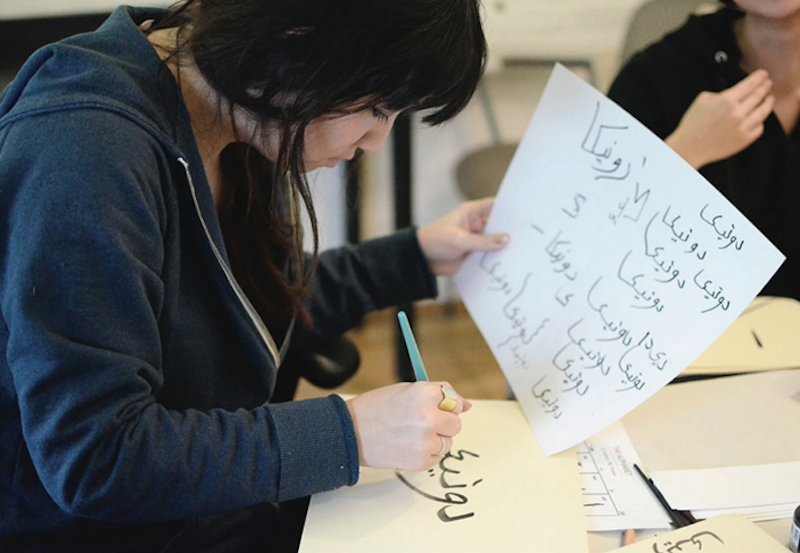
Danah Abdal sips another Turkish coffee in a cozy, Persian-carpeted Palestinian home huddled in the busy streets of Kuwait city. Smoke wafts through the room, and traditional weavings glitter the walls. I’m spending the afternoon with the Palestinian Kuwaiti designer to learn more about how she is bringing traditional Middle Eastern art forms to western design practices. That’s why she created Nagsha (a Kuwaiti dialect take on naqsha, the arabic word for pattern). It started while she was at Manhattan’s School of Visual Arts, where she used the platform to teach other grad students to make shapes through traditional Arabian design. She uses elements like calligraphy, weaving, and, of course, naqshas.
Abdal’s past Nagsha workshops were extremely successful, and now, the bi-continental designer is set on expanding them throughout both regions.
SCOPE: So what exactly is Nagsha?
DANAH ABDAL: Nagsha is an online platform and workshop series that focuses on cultural communication between the Middle East and The U.S. We run workshops that combine traditional crafts and contemporary design.
What does integrating Nagsha into contemporary western design mean to you?
Arabic art culture lets me see the beauty in traditional and handmade practices, such as simple Indigenous embroideries, and I feel that the way to preserve the beauty of this culture is through Nagsha. The classes I offered taught a lot of people from other cultures to integrate Arabic art forms into their designs in an innovative fashion, such as crafting images filled with calligraphy, or using Arabian embroideries and weavings in their designs.
Why do you feel this integration is important?
It’s been noticed that Arabic weaving, especially Palestinian weavings, are used in everyday manufactured pieces [from fast fashion retailers], and not many people are aware of their origins. Throughout the MENA [Middle East/North Africa] region, different weavings can tell a story about the wearer or weaver’s life, from where they were born, to if they lost a child, or if they’re married, or if they were in a war. This has been bastardized through manufactured design. But with Nagsha, teaching people about the art and simplicity of Arabic design and how to integrate it into their own methods paves the gap between Western and Eastern miscommunication. It also simply brings awareness to a part of the world that the Western mentality does not always celebrate or familiarize itself with.
Do you have plans to expand Nagsha in the future?
I want to implement Nagsha as a workshop wherever I’m living, whether it’s in the States or even in Kuwait. Upon doing my research at the Sadu House in Kuwait City, I discovered after talking to a couple of the teachers — professional weavers who live humble, traditional lives and have done this their whole lives — that the art of Sadu (weaving) is a dying art. Due to the conservative population of the country, many female teachers refuse to have men in their class and vice versa. Of course, this is a small part of the population; however, these also tend to be the only people who know how to weave. Thus, weavers are literally dying off. Nagsha is a gender-neutral workshop and by hosting it in Kuwait, I’d like to spark a new generation of weavers to preserve the art in a modern fashion.
Nagsha by Danah Abdal from SVA MFA Design on Vimeo.

